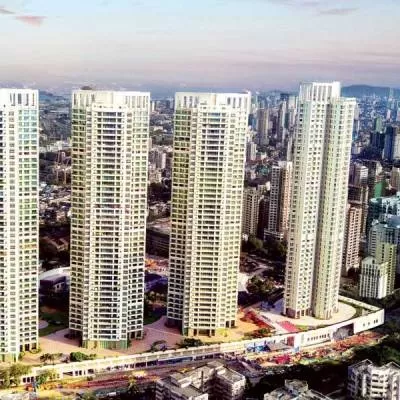- Home
- Real Estate
- Back on Track
Back on Track
Post the economic downturn in 2008, the real estate industry came to a standstill with subdued demand and almost no investment in the sector. Even a few years after 2008, the sector just about managed to stay afloat. This period was marked by almost minimal activity within the sector by relevant stakeholders. The Indian real estate sector started showing signs of recovery from mid-2014, and things began to move in the right direction. Concerted efforts were made to bring the sector back on track, and lot of efforts are still on. This was a period that was quite in contrast to the policy paralysis that overshadowed the overall economy, during the preceding years. Favourable government policies and improvement in sentiments were the major factors that helped the real estate sector get back on the road to recovery.
The green shoots
In 2015, private equity (PE) investments from foreign as well as domestic funds in Indian real estate grew 72 per cent over the previous year to Rs 25,680 crore - the highest since the peak of 2008. In 2015, 70 per cent of the total investments went to the residential segment, followed by the commercial segment at 21 per cent. The current government deserves due credit for taking decisive steps in creating a favourable environment for the resurgence of the Indian real estate and infrastructure sectors in the last two years. Political stability at the Centre, has to a great extent, transformed the encouraging situation on the ground. On the other hand, the Reserve Bank of India (RBI) has reduced interest rates, instilling confidence among home buyers to come back into the sector.
The catalysts
The implementation of the Real Estate Regulatory Authority (RERA) Act, 2016, has further emboldened buyer confidence in the real estate sector while serving as an effective tool to weed out inefficiencies from the system, making stakeholders in the sector more accountable and transparent. Similarly, the Goods and Services Tax (GST), which has been now been accepted as a Bill, could be termed as one of the biggest reforms in recent times. The GST Bill, once it becomes an Act, will bring in the much needed unified tax structure and prove to be a game-changer for the infrastructure and warehousing industries, thereby benefitting the sector as a whole.
There has been a lot of thrust by the government on ´Housing for All by 2022´ and affordable housing, which has also given a positive signal for the developer community and has brought back consumer confidence. The Smart Cities announcement has brought in a healthy and positive competition among various states, which will ultimately help the realty industry as well as the nation.
The government´s vision of ´Housing for All by 2022´ will present a huge opportunity for the developer community. The government plans to build 110 million housing units across the nation, which means a business opportunity to the tune of Rs 75,800 crore. National Housing Bank (NHB) is steering the low cost affordable housing mission of the Government of India with an earmarked capital of Rs 66.7 crore, which will revive the entire industry for years to come. The Smart Cities mission will create a whole new ecosystem and drive demand for retail and hospitality across the segment.
The government has relaxed FDI norms for the construction sector. This move, coupled with clarification on Real Estate Investment Trusts (REITs), will help funds flow into the sector and that too, at competitive rates. Institutional money flowing into the sector, in the long run, will only cleanse the sector and weed out its inefficiencies.
Ground reality
Efforts towards creating a positive and conducive environment has started to show positive results on the ground. If we look at 2016, the trend is more than encouraging. As per our research, in the first-quarter of 2016, the commercial (read office) market continued to grow at a healthy pace. It witnessed a 25 per cent jump in the total volume of transactions compared to the same period in 2015. The proposed infrastructure developments to improve connectivity in Gurgaon, Noida, Bengaluru and Mumbai are a step in this direction. The proposed Revised Draft Development Plan (RDDP) 2034 for Mumbai is a step towards ensuring that the metropolis continues to maintain its position as the top job creator in the western part of the country.
Traditional sectors, such as IT and ITeS, and BFSI, will continue to fuel the commercial real estate market in the country. Of late, the e-commerce sector has also started to make its presence felt, emerging as one of the largest occupiers of commercial space, especially in 2015.
The FICCI-Knight Frank Sentiment Index (April to June 2016), Q2, which turned positive after six quarters, continues to show robust optimism among the stakeholders from the supply side. The Sentiment Index is an important barometer for the real estate and infrastructure industries.
Having said that, the first-half of 2016 was an extremely interesting one, as highlighted in our latest study. The most important outcome is, that for the first time after two half-yearly studies, an inflection point has been reached, where there is a 7 per cent growth being registered in the residential sector.
The commercial market, on the other hand, continues to grow from strength to strength, with performance in the last six months being spectacular. In fact, if I were to crystal gaze, the office market is poised to have its best year in 2016 since the global financial crisis.
About the author:
Shishir Baijal, Chairman and Managing Director, Knight Frank (India), has over 37 years of experience across diverse industries that include real estate, hospitality, education and entertainment.
The real estate sector is poised for growth, riding on the back of robust government reforms, says SHISHIR BAIJAL. Post the economic downturn in 2008, the real estate industry came to a standstill with subdued demand and almost no investment in the sector. Even a few years after 2008, the sector just about managed to stay afloat. This period was marked by almost minimal activity within the sector by relevant stakeholders. The Indian real estate sector started showing signs of recovery from mid-2014, and things began to move in the right direction. Concerted efforts were made to bring the sector back on track, and lot of efforts are still on. This was a period that was quite in contrast to the policy paralysis that overshadowed the overall economy, during the preceding years. Favourable government policies and improvement in sentiments were the major factors that helped the real estate sector get back on the road to recovery. The green shoots In 2015, private equity (PE) investments from foreign as well as domestic funds in Indian real estate grew 72 per cent over the previous year to Rs 25,680 crore - the highest since the peak of 2008. In 2015, 70 per cent of the total investments went to the residential segment, followed by the commercial segment at 21 per cent. The current government deserves due credit for taking decisive steps in creating a favourable environment for the resurgence of the Indian real estate and infrastructure sectors in the last two years. Political stability at the Centre, has to a great extent, transformed the encouraging situation on the ground. On the other hand, the Reserve Bank of India (RBI) has reduced interest rates, instilling confidence among home buyers to come back into the sector. The catalysts The implementation of the Real Estate Regulatory Authority (RERA) Act, 2016, has further emboldened buyer confidence in the real estate sector while serving as an effective tool to weed out inefficiencies from the system, making stakeholders in the sector more accountable and transparent. Similarly, the Goods and Services Tax (GST), which has been now been accepted as a Bill, could be termed as one of the biggest reforms in recent times. The GST Bill, once it becomes an Act, will bring in the much needed unified tax structure and prove to be a game-changer for the infrastructure and warehousing industries, thereby benefitting the sector as a whole. There has been a lot of thrust by the government on ´Housing for All by 2022´ and affordable housing, which has also given a positive signal for the developer community and has brought back consumer confidence. The Smart Cities announcement has brought in a healthy and positive competition among various states, which will ultimately help the realty industry as well as the nation. The government´s vision of ´Housing for All by 2022´ will present a huge opportunity for the developer community. The government plans to build 110 million housing units across the nation, which means a business opportunity to the tune of Rs 75,800 crore. National Housing Bank (NHB) is steering the low cost affordable housing mission of the Government of India with an earmarked capital of Rs 66.7 crore, which will revive the entire industry for years to come. The Smart Cities mission will create a whole new ecosystem and drive demand for retail and hospitality across the segment. The government has relaxed FDI norms for the construction sector. This move, coupled with clarification on Real Estate Investment Trusts (REITs), will help funds flow into the sector and that too, at competitive rates. Institutional money flowing into the sector, in the long run, will only cleanse the sector and weed out its inefficiencies. Ground reality Efforts towards creating a positive and conducive environment has started to show positive results on the ground. If we look at 2016, the trend is more than encouraging. As per our research, in the first-quarter of 2016, the commercial (read office) market continued to grow at a healthy pace. It witnessed a 25 per cent jump in the total volume of transactions compared to the same period in 2015. The proposed infrastructure developments to improve connectivity in Gurgaon, Noida, Bengaluru and Mumbai are a step in this direction. The proposed Revised Draft Development Plan (RDDP) 2034 for Mumbai is a step towards ensuring that the metropolis continues to maintain its position as the top job creator in the western part of the country. Traditional sectors, such as IT and ITeS, and BFSI, will continue to fuel the commercial real estate market in the country. Of late, the e-commerce sector has also started to make its presence felt, emerging as one of the largest occupiers of commercial space, especially in 2015. The FICCI-Knight Frank Sentiment Index (April to June 2016), Q2, which turned positive after six quarters, continues to show robust optimism among the stakeholders from the supply side. The Sentiment Index is an important barometer for the real estate and infrastructure industries. Having said that, the first-half of 2016 was an extremely interesting one, as highlighted in our latest study. The most important outcome is, that for the first time after two half-yearly studies, an inflection point has been reached, where there is a 7 per cent growth being registered in the residential sector. The commercial market, on the other hand, continues to grow from strength to strength, with performance in the last six months being spectacular. In fact, if I were to crystal gaze, the office market is poised to have its best year in 2016 since the global financial crisis. About the author: Shishir Baijal, Chairman and Managing Director, Knight Frank (India), has over 37 years of experience across diverse industries that include real estate, hospitality, education and entertainment.






















